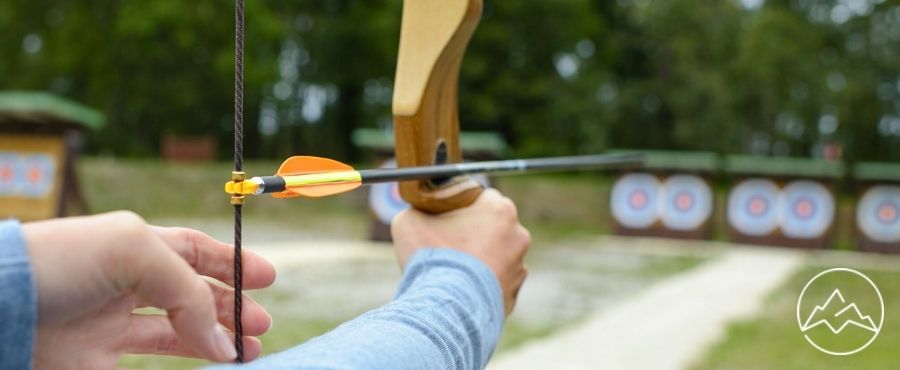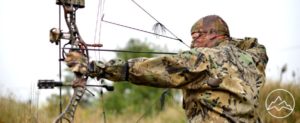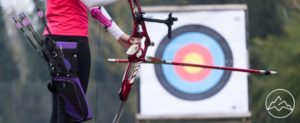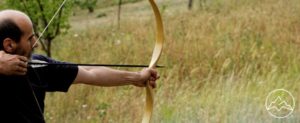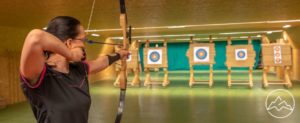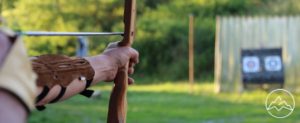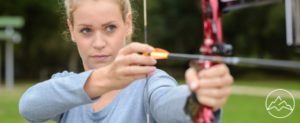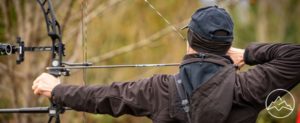In the realm of archery, where precision and accuracy are paramount, the flight of an arrow plays a pivotal role in hitting the target. It is often said that the arrow is the extension of the archer’s arm, and just like a skilled musician needs the right instrument to produce harmonious melodies, an archer requires the perfect arrow to achieve optimal performance. Enter the concept of arrow spine – the measurement of stiffness that determines the arrow’s flight characteristics. Like the backbone of an archer’s arsenal, the arrow’s spine can make or break the trajectory and impact of each shot. This article delves into the intricate world of improving arrow flight by exploring the importance of finding the right spine. We will unravel the nuances of static and dynamic spine, discuss the factors that influence arrow spine selection, and provide expert tips to enhance arrow flight. Embark on this journey to unlock the secrets behind achieving arrow flight excellence.
Key Takeaways
- Arrow spine is a measurement of stiffness and affects flight and impact.
- Correct spine improves consistency and accuracy in archery.
- Arrow spine can be determined using charts provided by manufacturers.
- Adjustments to draw weight, arrow length, or point weight can change arrow spine.
Understanding Arrow Spine
Understanding arrow spine is crucial for improving arrow flight as it directly affects the consistency, accuracy, and impact of the arrow. Arrow spine measurement is a way to determine the stiffness of the arrow, with a lower number indicating a stiffer arrow. The correct spine is important for achieving a consistent and accurate shot. The impact of arrow spine on flight is significant, as an under-spined arrow tends to veer to the right while an over-spined arrow veers to the left. It is essential to consider factors such as draw length, arrow length, and poundage/draw weight when determining the arrow spine. Manufacturers provide charts to help archers find the correct spine based on point weight, draw weight, and arrow length. By understanding and finding the right arrow spine, archers can improve their arrow flight and overall shooting performance.
Static and Dynamic Spine
Static spine and dynamic spine are two distinct measurements used in archery to evaluate the stiffness and flexibility of an arrow, allowing for a comprehensive understanding of how the arrow will react to stored energy and its subsequent flight, akin to the interplay of a tightly coiled spring and the release of its potential energy.
- Importance of proper arrow spine for accuracy:
- Correct spine ensures consistent and predictable arrow flight.
- Improper spine can lead to unpredictable bow and arrow contact.
- Inconsistent spine results in inconsistent accuracy.
- How to choose the correct arrow spine for your setup:
- Consult manufacturer’s spine charts, considering draw length, arrow length, and draw weight.
- Adjust spine by changing draw weight, arrow length, or point weight.
- Seek expert assistance for personalized guidance.
Choosing the right arrow spine is crucial for achieving accuracy and consistency in archery. Understanding the difference between static and dynamic spine allows archers to make informed decisions when selecting arrows for their specific setup.
Tips for Better Flight
To enhance the trajectory of an arrow, it is advisable to explore different wood arrow options and seek professional assistance for guidance on improving flight consistency. When troubleshooting problems with arrow flight, it is crucial to consider the arrow’s spine. A properly spined arrow is essential for accurate shooting. If an arrow is too stiff or too weak, it can result in inconsistent flight patterns. For right-handed archers, arrows that are too stiff tend to fly left, while arrows that are too weak tend to fly right. To address weak spine issues, increasing the tip weight or shooting longer arrows can help. Additionally, trying different wood arrows at a local shop may improve flight. Seeking expert assistance can provide valuable insights and personalized recommendations for better arrow flight.
Frequently Asked Questions
What are the measurements needed to determine arrow spine?
To determine arrow spine, several measurements are needed, including draw length, arrow length, and poundage/draw weight. Additionally, the point weight, draw weight, and arrow length are used in an arrow spine chart. By inputting these measurements into the chart, the correct spine weight can be determined. For example, if an archer has a draw length of 29 inches, an arrow length of 30 inches, and a draw weight of 26 pounds, these measurements would be used to find the appropriate arrow spine.
How does arrow spine affect the flight and impact of an arrow?
Arrow spine plays a critical role in the flight and impact of an arrow. It directly affects shooting accuracy by influencing the consistency and stability of arrow flight. A properly spined arrow ensures that the arrow reacts appropriately to the stored energy in the bow, resulting in predictable and accurate shots. Arrow spine also affects hunting success as it determines the arrow’s trajectory and impact on the target. Therefore, understanding and selecting the correct arrow spine is essential for achieving optimal shooting performance and hunting effectiveness.
What should be done if an arrow is under-spined or over-spined?
When an arrow is under-spined or over-spined, it can significantly impact its flight and accuracy. To address this issue, arrow tuning is necessary. This involves adjusting the bow poundage or draw weight to find the optimal spine for the arrow. Increasing the poundage can help with an under-spined arrow, while decreasing it can assist with an over-spined one. By finding the right spine through these adjustments, archers can improve their arrow flight and achieve better accuracy.
How can increasing tip weight or shooting longer arrows help with a weak spine?
Increasing arrow tip weight and shooting longer arrows can help with a weak arrow spine. By increasing the weight at the front of the arrow, the overall spine stiffness is increased, which can compensate for a weak spine. Similarly, shooting longer arrows can also increase the overall stiffness of the arrow, which can help improve its flight. These adjustments can be effective in achieving the desired arrow flex and improving accuracy.
What should be done if an archer is experiencing leftward arrow flight?
Leftward arrow flight can be corrected by adjusting the bow grip to ensure proper alignment. Additionally, proper arrow fletching plays a crucial role in stabilizing the arrow during flight. By using the correct fletching and ensuring it is securely attached, the archer can improve the arrow’s stability and prevent it from veering off to the left. Adjusting these factors in combination with finding the right arrow spine will lead to improved arrow flight and accuracy.
Conclusion
In conclusion, finding the right arrow spine is crucial for improving arrow flight in archery. By understanding the concepts of static and dynamic spine and considering factors such as draw length, arrow length, and poundage/draw weight, archers can achieve better consistency and accuracy. Seeking expert assistance, experimenting with different wood arrows, and making adjustments to tip weight or arrow length can also contribute to improved arrow flight. For example, a case study showed that by adjusting the arrow length to match the archer’s draw length, the arrow flight became more consistent and accurate, resulting in higher scores in competitions.

